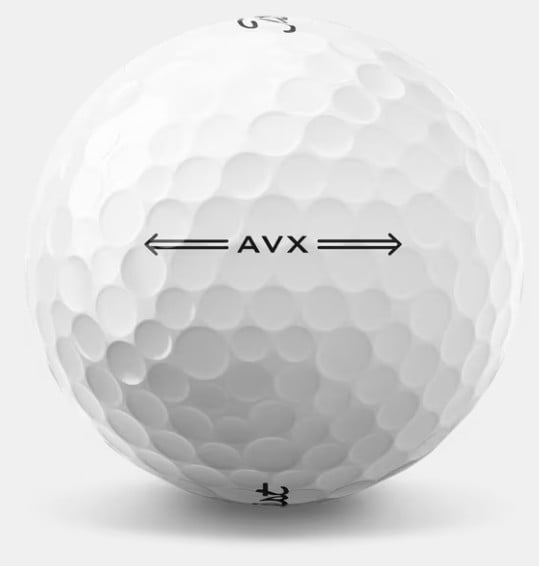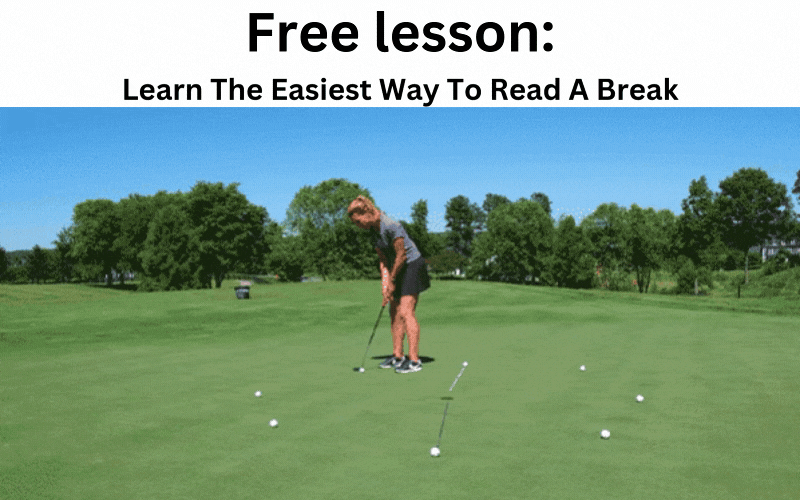What Golf Ball Should I Use? The Complete Guide to Choosing Your Perfect Ball
Confused by the endless golf ball options? Discover the science-backed method to select the perfect ball for your swing speed, skill level, and budget – and start lowering your scores today.
The Science of Golf Ball Selection: Why Your Choice Matters
When it comes to playing golf, your ball selection can dramatically impact your performance. With dozens of options available, choosing the right golf ball isn't just about brand preference – it's about matching scientific engineering to your unique swing characteristics.
Whether you're a high handicap golfer, mid-handicap player, or senior golfer, there are specific balls engineered for your needs. The key is understanding how four critical factors – compression, construction, spin, and cost – interact with your playing style.
📊 Golf Ball Impact on Performance
Compression: The Foundation of Ball Selection
Golf ball compression measures how much the ball deforms when struck, rated on a scale from 30 (very soft) to 120 (very firm). This isn't just about feel – compression directly affects distance, spin, and control based on your swing speed.
Swing Speed vs. Compression: The Perfect Match
🎯 Swing Speed Categories & Recommended Compression
Compression Characteristics Explained
🟢 Low Compression (30-70)
Best for: Slower swing speeds, seniors, beginners
Benefits: Easier to compress, more distance for slower swings, softer feel, reduced slice/hook
Drawbacks: Less control, reduced workability
Popular examples: Callaway SuperSoft, Wilson Duo, Srixon Soft Feel
🟡 Medium Compression (70-90)
Best for: Average golfers, moderate swing speeds
Benefits: Balanced performance, good distance and control, versatile feel
Drawbacks: May not optimize either distance or control
Popular examples: Titleist Tour Speed, TaylorMade Tour Response
🔴 High Compression (90-120)
Best for: Fast swing speeds, low handicap players
Benefits: Maximum control, excellent workability, tour-level performance
Drawbacks: Harder feel, requires faster swing to activate
Popular examples: Titleist Pro V1x, TaylorMade TP5x
Ball Construction: Layers That Matter
The number of layers in a golf ball dramatically affects its performance characteristics. Understanding construction helps you choose between distance, control, and feel based on your skill level.
🔧 Golf Ball Construction Types
2-Piece Balls
Construction: Large core + durable cover
Best for: Beginners, high handicappers
Pros: Maximum distance, straight flight, durability, lowest cost
Cons: Less spin control, harder feel around greens
Examples: Titleist Velocity, Callaway Warbird
3-Piece Balls
Construction: Core + mantle layer + cover
Best for: Mid-handicap players, developing golfers
Pros: Balanced performance, good control, better feel
Cons: Moderate cost, some distance trade-off
Examples: Titleist Pro V1, Bridgestone Tour B RX
4-Piece Balls
Construction: Core + dual mantle + cover
Best for: Low handicap players, fast swing speeds
Pros: Maximum control, tour-level spin, precise feel
Cons: Premium price, requires skill to utilize
Examples: Titleist Pro V1x, Callaway Chrome Soft X
5-Piece Balls
Construction: Multi-core + triple mantle + cover
Best for: Tour professionals, elite players
Pros: Ultimate performance optimization, maximum customization
Cons: Highest cost, minimal benefit for average players
Examples: TaylorMade TP5, TaylorMade TP5x
Distance: Maximizing Your Driving Performance
Distance isn't just about swing speed – it's about optimizing energy transfer from club to ball. The right ball choice can add 15-20 yards to your drives by matching compression and construction to your swing characteristics.
Factors Affecting Distance
Swing Speed: All things being equal, faster players hit the ball farther than slower players. However, the relationship between speed and distance depends heavily on energy transfer efficiency.
Ball Construction: Larger cores generally produce more ball speed. As one expert puts it, "Core size is key to ball speed. A big core, whether in a 2-piece or 3-piece ball, will generally have more speed. It's like the engine of a car – a Mustang with a big V8 against a four-cylinder engine."
Environmental Factors: Air density affects ball flight significantly. At higher elevations, lower air density allows balls to fly farther, but this varies greatly depending on the golfer's swing and club choice.
Club Selection: Choosing the correct club for your ability level is crucial. Low handicap golfers should focus on driver and long iron optimization, while high handicappers benefit more from improving their sand wedge and pitching wedge performance.
Spin Control: The Art of Ball Flight Management
Spin affects how your ball flies and lands, making it crucial for different shot types. Understanding spin helps you hit shots higher or lower and control landing angles based on your skill level.
Types of Spin and Their Effects
Launch Angle Spin: High spin rates make the ball "lift" out of the sky, creating more height and steeper landing angles. Low spin rates cause the ball to fall with reduced height and shallower landing angles.
Sidespin Control: Modern dimple patterns are engineered to eliminate unwanted sidespin that causes hooks and slices. The ideal dimple arrangement creates lower resistance along certain rotation axes while increasing resistance on others.
Short Game Spin: Low-spin golf balls feel hard at impact during short game shots, making it difficult to use spin for stopping chip shots. Higher-spin balls provide better greenside control but may sacrifice some distance.
Ball Type Performance Matrix
| Ball Type | Distance | Driver Spin | Iron Spin | Greenside Control | Feel | Durability |
|---|---|---|---|---|---|---|
| 2-Piece Low Compression | Excellent | Low | Low | Limited | Soft | Excellent |
| 3-Piece Urethane | Good | Medium | Medium | Good | Balanced | Good |
| 4-Piece Tour | Good | Optimized | High | Excellent | Premium | Moderate |
Practice Recommendations: Use a tee box or driving range to experiment with different clubs and spin characteristics. If you play with an oversized driver, you'll generate more spin than needed, making distance control challenging.
Cost Considerations: Balancing Performance and Budget
Golf ball expenses add up quickly, especially when you're losing multiple balls per round. Finding the right balance between performance and cost is essential for maintaining your golf budget.
💰 Golf Ball Cost Categories
Value Balls
Mid-Range Balls
Premium Balls
Cost-Performance Guidelines
Beginners and High Handicappers: Premium balls aren't worth the extra cost. Focus on affordable 2-piece balls that emphasize distance and durability. Losing 3+ balls per round with premium balls adds $15+ to each round.
Mid-Handicap Players: Consider mid-range 3-piece balls that offer improved control without premium pricing. These provide noticeable performance gains as your short game develops.
Low Handicap Players: Premium balls become worthwhile investments. The enhanced control and feel can directly translate to lower scores, justifying the higher cost.
Money-Saving Strategies:
- Buy used or recycled balls in good condition
- Purchase in bulk during sales
- Compare prices across different retailers
- Consider previous-generation premium balls at reduced prices
Specialized Ball Recommendations by Player Type
Senior Golfers
Lower compression balls (30-60) maximize distance for slower swing speeds. Focus on 2-piece construction for forgiveness and straight flight. The softer compression creates a trampoline effect that helps maintain distance as swing speed decreases with age.
Women Golfers
Generally benefit from low-to-medium compression balls (40-80) depending on individual swing speed. Many women's golf balls feature lower compression cores specifically designed for moderate swing speeds, with enhanced aerodynamics for improved carry distance.
Junior Golfers
Start with low compression, 2-piece balls that emphasize forgiveness and distance. As swing speed and skill develop, gradually progress to medium compression options. Focus on durability due to frequent mishits during the learning process.
Advanced Players
High compression (90+), multi-layer balls provide the control needed for shot shaping and precision. Urethane covers offer superior greenside spin for aggressive pin hunting and course management strategies.
How to Test and Choose Your Perfect Ball
Step 1: Determine Your Swing Speed
Visit a golf professional or driving range with launch monitor technology. Accurate swing speed measurement is crucial for proper ball selection. Many facilities offer this service for free or at minimal cost.
Step 2: Consider Your Skill Level
Honestly assess your current abilities. If you're losing multiple balls per round, start with value options before investing in premium balls. Focus on consistency before pursuing maximum performance.
Step 3: Test Different Options
Try 3-4 different balls within your recommended category during practice rounds. Pay attention to:
- Distance differences off the tee
- Feel around the greens
- Ball flight characteristics
- Performance in different weather conditions
Step 4: Commit to Your Choice
Once you find a ball that works, stick with it for an extended period. Consistency in ball selection allows you to learn its behavior patterns and optimize your course management accordingly.
Common Golf Ball Myths Debunked
Myth 1: "Soft Balls Are Always Slower"
Reality: For golfers with swing speeds under 90 MPH, compression differences have minimal impact on ball speed. The "soft is slow" rule primarily applies to very fast swing speeds (105+ MPH).
Myth 2: "More Layers Always Means Better Performance"
Reality: Additional layers only benefit players who can generate sufficient speed to activate all layers. For most golfers, 4+ piece balls offer little advantage over quality 3-piece options.
Myth 3: "Expensive Balls Automatically Lower Your Score"
Reality: Premium balls only help if your game can utilize their advanced features. Consistent contact and course management matter more than ball selection for most handicap levels.
Environmental Factors and Ball Selection
Weather Considerations
Cold Weather: Lower temperatures reduce compression, making balls feel harder and fly shorter. Consider using slightly lower compression balls in cold conditions.
Hot Weather: Higher temperatures increase compression and can make firm balls feel even harder. Softer balls maintain better feel in extreme heat.
Wind Conditions: Lower-spinning balls perform better in windy conditions, maintaining more stable flight patterns. High-spin balls can become difficult to control in strong crosswinds.
Course Conditions
Firm Greens: Higher-spinning balls help stop shots on hard surfaces. The increased backspin creates steeper landing angles for better control.
Soft Greens: Lower-spinning balls prevent excessive checking, allowing for more aggressive pin hunting on receptive surfaces.
The Science Behind Modern Golf Ball Technology
Today's golf balls represent centuries of engineering evolution. Advanced materials like thermoplastic urethane covers, reactive cores, and precisely engineered dimple patterns work together to optimize aerodynamics and energy transfer.
Modern manufacturers invest millions in research and development, using robotic testing and computational fluid dynamics to create balls that perform consistently across varying swing speeds and conditions. Understanding these technologies helps golfers appreciate why proper ball selection matters more than ever.
For detailed technical information about golf ball engineering and testing standards, visit the Golf Insider compression database, which provides comprehensive data on compression ratings and performance characteristics for hundreds of current golf ball models.
Conclusion: Making Your Choice
Selecting the right golf ball requires balancing multiple factors: your swing speed, skill level, playing style, and budget. The key is understanding that no single ball excels in every category – it's about finding the combination that best matches your current game while allowing room for improvement.
Remember that golf ball technology continues advancing rapidly. What works best for you today may change as your game evolves. Stay informed about new developments, but don't chase every new release. Consistency in ball selection often produces better results than constantly switching to the latest technology.
Start with the fundamental matching of compression to swing speed, choose construction based on your skill level, and prioritize the performance characteristics most important to your game. Whether that's maximum distance, enhanced control, or finding the best value for your budget, the perfect ball for your game is out there waiting to help you play better golf.
Ready to dive deeper into golf ball technology? Explore our comprehensive guide on golf history and terminology to understand how the sport's equipment has evolved over the centuries.

